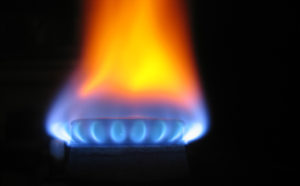 Natural gas rebounded from a one-month low on Friday but marked a third consecutive weekly decline as short-term weather forecasting models called for moderating weather in the upcoming days, implying reduced consumption of the power-station fuel. Expectations for a record high withdrawal in US inventories and extended forecasts pointing to the return of colder-than-usual temperatures put a floor under prices.
Natural gas rebounded from a one-month low on Friday but marked a third consecutive weekly decline as short-term weather forecasting models called for moderating weather in the upcoming days, implying reduced consumption of the power-station fuel. Expectations for a record high withdrawal in US inventories and extended forecasts pointing to the return of colder-than-usual temperatures put a floor under prices.
On the New York Mercantile Exchange, natural gas futures for settlement in February rose by 1.2% on Friday to settle at $4.05 per million British thermal units. Prices slid to a one-month low of $3.953 on Friday, having settled at $4.005 per mBtu on Thursday, the lowest close since December 4th. The contract lost 6.9% in the first four trading days but trimmed their weekly decline to 5.7% following Fridays rebound, having erased nearly 2.3% in the previous two five-day periods.
The energy source was pressured throughout the week as short-term weather forecasting models showed mostly normal temperatures across the US in the upcoming days. According to a weekly Bloomberg survey, the decline is expected to extend into next week, weighed on by reduced demand. Eight of 15 analysts polled, or 53%, wagered that prices will fall, while five were bullish, and the remaining two were neutral.
NatGasWeather.com reported on Friday that a fairly strong rainstorm developing early in the weekend over Texas will sweep across all of the eastern US. Temperatures were expected to be very mild due to warm southerly winds ahead of the storm. Readings were expected to peak at 40-50 degrees Fahrenheit in the Northeast and Mid-Atlantic, and at 60-70 degrees in the Southeast.
According to AccuWeather.com, the low in New York on January 14th will be 37 degrees Fahrenheit, 10 above usual, while temperatures in Boston will bottom at 36 degrees Fahrenheit, well above the average of 22 degrees. Readings in Chicago on Monday will fall to 29 degrees Fahrenheit, 11 above normal, before decreasing later in the week and matching seasonal readings.
Extended forecasts
Extended forecasts however called for the return of cold air in some of the most densely-populated US areas, putting a floor under prices. According to NatGasWeather.com, another shot of cold will blast though the Midwest and into the Northeast early next week. Although this outbreak will not be as impressive as the most recent one, the temperature decline should bring natural gas consumption back to above the average.
The power-station fuel was also underpinned by expectations EIAs January 16th report might show a record high withdrawal in US inventories in the week ended January 10th. According to Gelber & Associates in Houston, cited by Bloomberg, the Energy Information Administration might report US stockpiles slid by 286 billion cubic feet, well above the five-year average decline of 159 bcf. This would outstrip the 285 bcf drop in the seven days through December 13th, which was the biggest draw on record.
Bob Yawger, director of the futures division at Mizuho Securities USA Inc. in New York, said, cited by Bloomberg: “The storage number next week is likely to trump the record. Inventories are at the lowest level since 2008 for this time of year.”
Inventories levels
The Energy Information Administration reported on Thursday that US gas supplies fell by 157 billion cubic feet in the week ended January 3rd, beating expectations for a decline of 149 bcf. This was above the five-year average drop of 131 billion cubic feet, but less than last year’s 191 bcf withdrawal during the comparable period. However, the decline was insufficient, especially considering the recent record low temperatures.
Total gas held in underground storage hubs equaled 2.817 trillion cubic feet as of January 3rd, 15.8% below last year’s 3.345 trillion stored. The deficit to the five-year average widened to a record 10.1% from 8.9% in the preceding week.
The government agency trimmed its forecast for gas inventories at the end of March by 200 billion cubic feet to 1.5 trillion. The revision was based on “a cold December and several large weekly withdrawals”, Adam Sieminski, administrator of the EIA, said.





